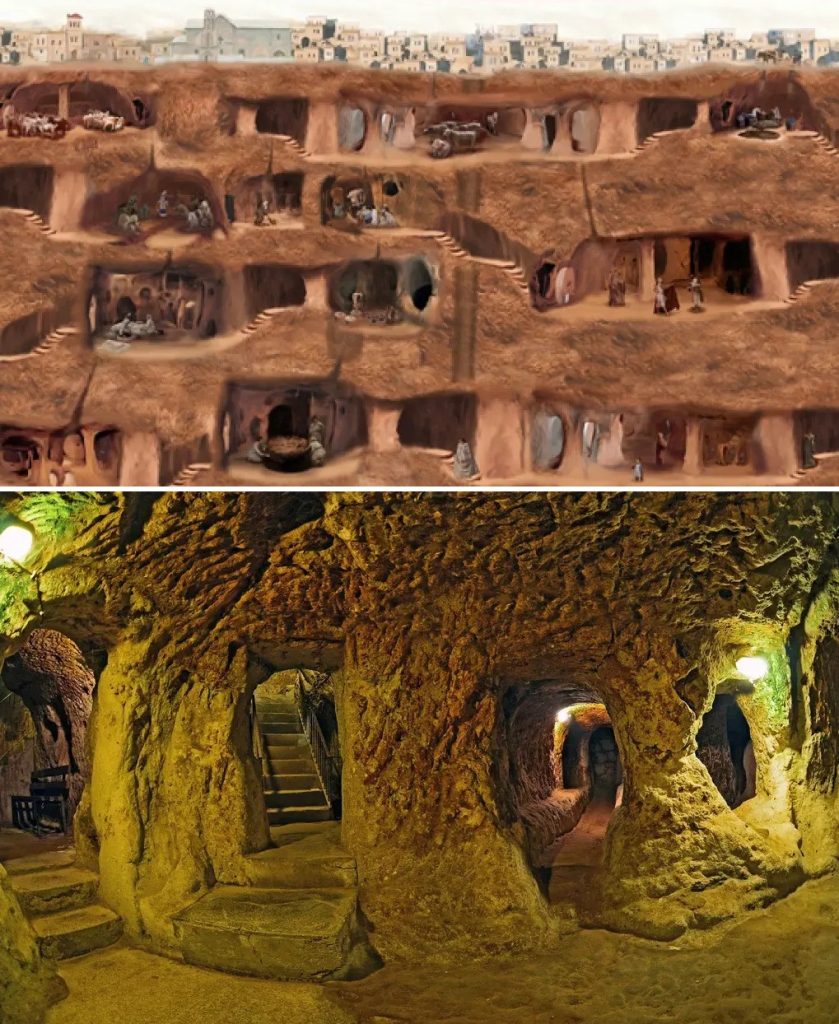Archaeologists have made a groundbreaking discovery of a vast network of underground tunnels spanning from Scotland to Turkey, believed to date back approximately 12,000 years. This extraordinary find sheds new light on ancient European societies, suggesting they may have been far more interconnected than previously understood. The implications of this discovery are profound, challenging long-held views of prehistoric civilizations and their capabilities.
The purpose and construction of these tunnels remain subjects of active debate among experts. While no definitive explanation exists, several compelling theories have emerged. One possibility is that these tunnels served as protection from predators and natural dangers, offering safe refuge during times of crisis. Another hypothesis is that they functioned as ancient highways, facilitating travel and trade across vast regions. A third theory posits that these structures held spiritual or religious significance, possibly acting as ceremonial pathways or connections to sacred sites.

Dr. Heinrich Kush, a renowned German archaeologist, has extensively documented these findings in his book “Secrets Of The Underground Door To An Ancient World.” His research reveals that these tunnels are not isolated phenomena but are instead found beneath numerous Neolithic settlements across Europe. This widespread presence suggests a shared cultural or functional purpose that transcended regional boundaries, hinting at a level of societal organization previously underestimated.
The characteristics of the tunnels further underscore the sophistication of their builders. These subterranean passageways vary in size, with some exceeding a meter in width. Many include chambers and storage areas, suggesting they were designed for more than mere passage. Some tunnels feature seating areas and small nooks, indicative of their use for prolonged stays or gatherings. The construction of these tunnels demonstrates advanced engineering techniques, particularly given the tools and resources available to ancient societies. Their ability to create stable, enduring structures deep underground speaks to their ingenuity and resourcefulness.
Several notable examples highlight the diversity and complexity of these tunnels. In Cappadocia, Turkey, the underground city of Derinkuyu offers a striking example of ancient subterranean architecture. Carved into soft volcanic stone, this multi-level structure showcases the builders’ remarkable expertise in creating a stable and functional underground environment. Derinkuyu’s intricate design includes ventilation shafts, living quarters, and storage facilities, reflecting a highly organized and purposeful effort.
In Bosnia, the Bosnian Pyramids and their associated tunnel systems provide additional evidence of advanced ancient engineering. These tunnels, which connect to pyramid-like structures, reveal a similar level of precision and intentionality. Together, these examples illustrate the widespread and varied application of underground construction techniques across different regions and cultures.
The cultural significance of these tunnels is another area of intrigue. Dr. Kush theorizes that later institutions, such as the Church, may have sought to control access to these structures by building chapels at their entrances. This strategy would have allowed religious authorities to regulate the flow of information about these prehistoric sites and their potential meanings. Some tunnels also contain inscriptions referring to them as gateways to the underworld, suggesting a spiritual or mythological dimension to their purpose. This interpretation aligns with the broader human tendency to attribute sacred or symbolic meaning to extraordinary natural and man-made features.
The implications of this discovery extend far beyond the tunnels themselves. The existence of such an extensive network challenges conventional assumptions about prehistoric societies. Traditionally, these groups have been portrayed as relatively simple, with limited technological and organizational capacities. However, the sophistication and scale of these tunnels suggest otherwise. They imply that ancient Europeans possessed advanced knowledge of engineering, geology, and logistics, as well as the social cohesion necessary to undertake such ambitious projects.
This revelation prompts a reevaluation of early human history and achievements. It raises questions about the transmission of knowledge and cultural practices across vast distances. How did these societies communicate and coordinate such large-scale efforts? What tools and techniques did they use, and how were these innovations shared? The discovery of these tunnels invites a broader exploration of the connections between ancient cultures and the factors that enabled their remarkable accomplishments.
Moreover, the tunnels highlight the importance of reexamining archaeological evidence with an open mind. As new discoveries come to light, they often challenge established narratives and force us to reconsider our understanding of the past. This dynamic process underscores the ever-evolving nature of historical inquiry and the potential for future findings to reshape our perceptions.
In conclusion, the uncovering of this vast underground tunnel network offers a fascinating glimpse into the ingenuity and interconnectedness of ancient European societies. These tunnels, stretching from Scotland to Turkey and dating back approximately 12,000 years, represent a monumental achievement that challenges traditional views of prehistoric civilizations. Through their advanced construction techniques, cultural significance, and widespread presence, these tunnels testify to the remarkable capabilities of our ancestors. As research continues, they promise to deepen our understanding of early human history and inspire new questions about the complexity and resilience of ancient cultures.





